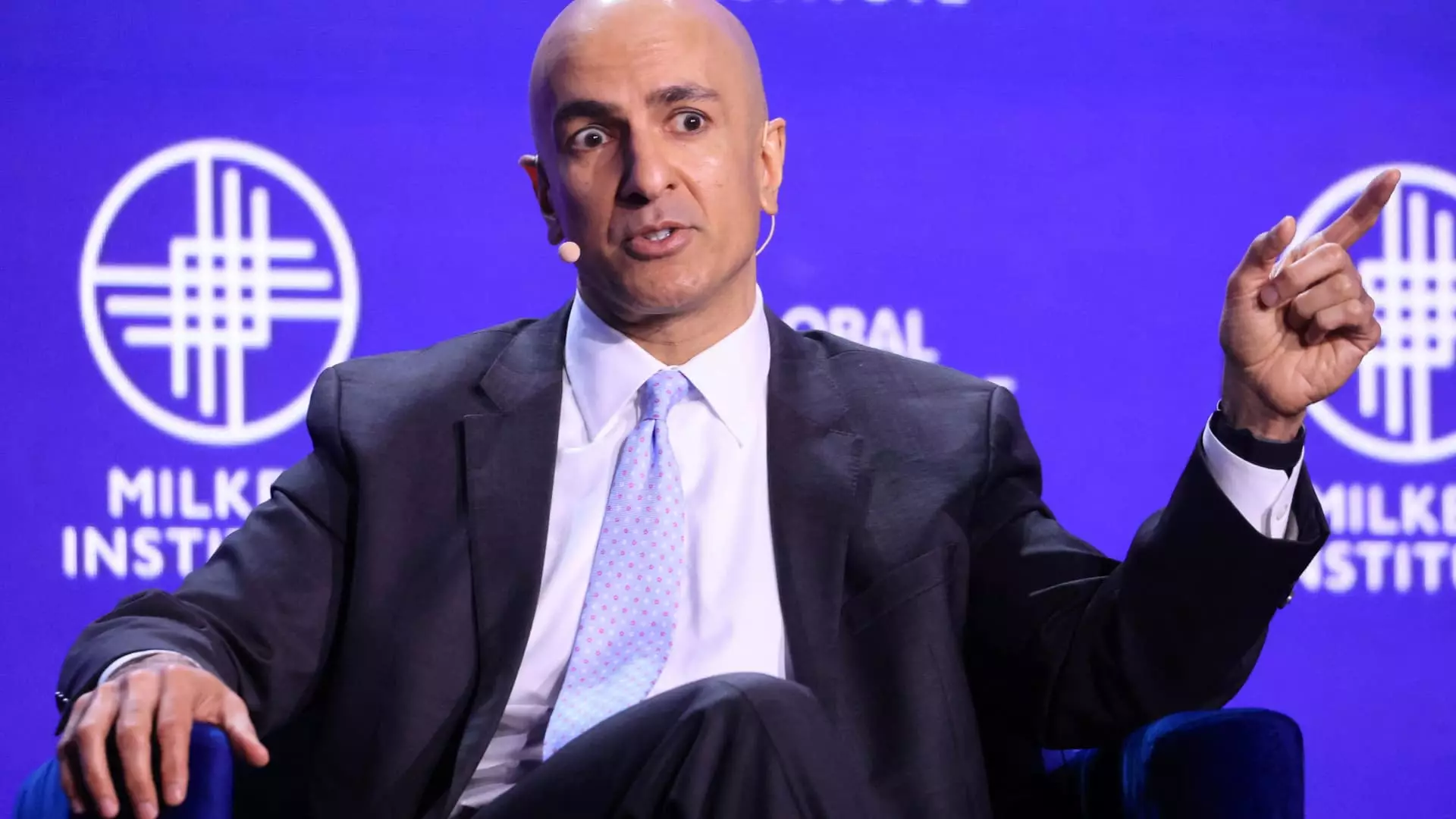In light of current economic conditions, the Federal Reserve’s decision to reduce interest rates has sparked considerable discussion among policymakers and economists alike. Minneapolis Federal Reserve President Neel Kashkari, in a recent interview, expressed that the Fed is likely to taper the pace of future rate cuts following a significant half-percentage point reduction. This move, which raised eyebrows across the financial sector, reflects a strategic pivot from a prior focus on combating rising inflation to responding to a more concerning trend of softening in the labor market.
Kashkari asserted that the recent rate cut was both necessary and a pragmatic step towards normalizing monetary policy. The backdrop to this decision was established by persistent inflation concerns that had defined the Fed’s approach over the last several years. Nevertheless, signs of labor market cooling prompted a reevaluation of priorities as the Fed aims to balance economic growth and inflation stability.
The Federal Open Market Committee (FOMC) has historically adjusted interest rates in response to economic conditions, a tool known as monetary policy. In this regard, recent discussions indicate a shift from aggressive rate cuts, commonly observed during crises, to more measured, smaller adjustments moving forward. Kashkari referred to the current rate environment as still being net tight, suggesting that even with the recent cut, the prevailing interest rates do not yet stimulate economic growth adequately.
This new direction could reflect a broader consensus within the FOMC about the trajectory of the economy, particularly concerning inflation and employment statistics. With inflation appearing to stabilize to some extent, as indicated by recent data, the Fed is strategically positioning itself for future policy decisions that are progressive yet cautious.
The evolving nature of inflation and employment figures creates a complex landscape for the Fed to navigate. In his remarks, Kashkari noted that a healthy job market remains a priority and that inflation statistics are trending favorably towards the ideal target of 2%. This raises an important question: how does the Fed ensure that it maintains its dual mandate of promoting maximum employment while stabilizing prices?
The response lies in proactive assessment and responsive policymaking. The Fed’s approach involves closely monitoring not only inflation but also employment trends to pre-emptively address the potential fallout of over or under-responsive measures. Banking on historical precedents where drastic cuts led to unintended consequences, the Fed appears to be reverting to its longstanding practice of gradual adjustments.
The sentiment voiced by Kashkari is echoed by Atlanta Fed President Raphael Bostic, who has similarly recognized the rapid pace at which economic indicators have shifted. Bostic, who holds a voting position this year, expressed optimism about the Fed’s ability to normalize rates sooner than previously predicted. This outlook may align with broader expectations across financial markets regarding future interest rate movements.
Bostic articulated a scenario where the Federal Reserve could remain adaptive in its decision-making—slowing down rate cuts if inflation begins to reaccelerate or quickening the pace of rate reductions if labor market conditions further decline. Such a flexible framework embodies the challenges faced by monetary policymakers who must balance various economic signals effectively.
Financial markets remain ever-sensitive to Federal Reserve actions, leading to anticipatory pricing around future interest rate decisions. With upcoming FOMC meetings, market participants are gauging the likelihood of subsequent cuts, weighing the prospects of either a quarter or a half-percentage point reduction. Current projections, according to the CME Group’s FedWatch tool, indicate an increased chance of a more significant reduction by December, potentially totaling 0.75 percentage points by year-end.
The trajectory of federal interest rates will undoubtedly shape economic conversations in the coming months. As the Fed pivots from aggressive cuts towards a more calibrated approach, careful monitoring of economic data will be key to ensuring that its policies remain effective. The balance of fostering a healthy labor market while controlling inflation exemplifies the intricate dance that policymakers must execute as they seek to foster sustainable economic growth.

